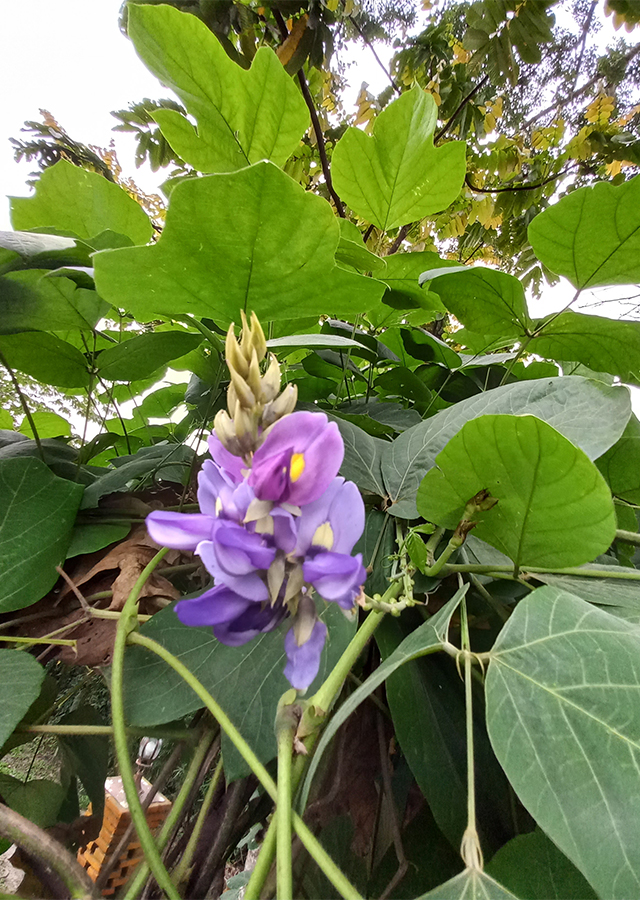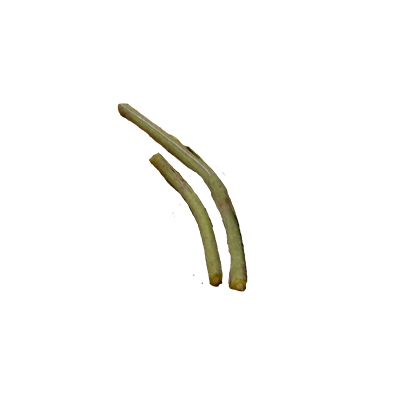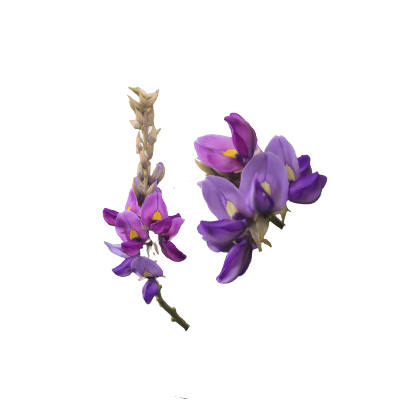Kudzu Vine
Pueraria montana (Lour.) Merr.
Fabaceae
Location in our garden
Principal



Synonym
Dolichos montanus Lour.
Pueraria lobata var. montana (Lour.) Maesen
Habitus
Climbers. Kudzu vine is a perennial climbing vine that produces very large tubers up to 2 m long and 18-45 cm wide that can weigh as much as 180 kg on old plants.
Part Used
Leaves
Flowers
Roots
Stem
Growing Requirements
Full Sunshine
Habitat
Riverbanks
Forest
Roadside
Grassland
Overview
Kudzu is a legume that is native to China, Japan and other parts of Southeast Asia. This plant has spread or has been introduced to many tropical areas including Oceania, Central Europe, Central and South America and the Continent of the United States. In China, kudzu is commonly used in oriental herbal medicine, and is considered one of the 50 basic ingredients in Chinese herbal medicine. All parts of the plant used medicinally, especially the starch-rich roots. Kudzu root which is rich in starch is also used as an ingredient in making foods such as making noodles, thickening soups, and gelatin. For flowers and young leaves can also be used as a vegetable.
Vernacular Names
Gan shu teng, Ge teng, Ye ge, Ge gen, Fen ge teng, Ko t'eng, Ko ten (Chinese), Purppurakudzu (Finnish), Aka, Wa-yake, Yaka (Fiji), Kudzu, Nepalem, Vigne japonoise, Koudsou, Koudzou (French), Kopoubohne (Germany), Bitok, Ngu lok, Tebi, Tobi (Indonesian), Pueraria (Italian), Kuzu, Daisumame, Fusi maki kadsura, In ken maki, Katsi maki, Kudzu, Saitzu mame (Japanese), Chilk, Cheulk, Chuk, Chik (Korean), Goruma, Gosima, Kagomba, Mapumb, Mudja, Nggaoka, Ngko-ko, Owitu, Sifu (Papua New Guinea), Lebu (Solomon Island), Kudzu comun, Kudzu ordinario (Spanish), Tum yaa krua (Thai.), Aka, Fue Alpuaka, Fue'ae Puaka (Tonga), Cu nang, Cu san day (Vietnamese).
Agroecology
Kudzu vine can be grown in a wide range of climates from milder areas in the temperate zone to the subtropics and higher elevations in the tropics. It grows best in areas where annual daytime temperatures are within the range 18 - 28 °C, but can tolerate 9 - 32 °C. When dormant, the plant can survive temperatures down to about -6 °C, but young growth can be severely damaged at -1 °C. Plants are hardy to about -15 °C, they can resprout from the base if they are cut down by frosts. It prefers a mean annual rainfall in the range 1,200 - 1,400 mm, but tolerates 950 - 2,200 mm. Succeeds in most well-drained soils in a sunny position, though it does not make good growth on very light poor sand or on poorly drained heavy clay. Grows best on well-drained loam soil of good fertility. Plants cannot stand waterlogging on any soil. Prefers a pH in the range 5.5 - 6.5, tolerating 5 - 7.1. A deep-rooted pant, once established it is very drought resistant. When grown in warm climates, the root can be invasive and plants have become weeds
Morphology
- Stems or branches are strong, approximately 0.6-2.5 cm in diameter and up to 30 m in length. They can grow up to 25 cm per day or 18 m per growing season, and produce root crowns where nodes contact soil.
- Leaves are pinnately trifoliate, 8-20 cm long and 5-19 cm wide with leaflets ovate to orbicular and unlobed to trilobed. Leaves are pale green above and light to greyish green below.
- Flowers purple to blue flowers, that smell of grapes, are borne on a mostly unbranched inflorescence 10-25 cm long.
- Fruits seeds are borne in golden-haired, brown, flattened, oblong pods, 4-13 cm long and 0.6-1.3 cm wide.
- Seeds visible through the pod, are flattened, ovoid and reddish brown with a black mosaic pattern. They are approximately 4-5 mm long by 4 mm wide and 2 mm thick
Cultivation
- Kudzu vine propagated from seed and division. Pre-soak the seed for 12 hours in warm water and sow in a warm greenhouse in early spring. Germination should take place within 2 weeks. Prick out the seedlings into individual pots when they are large enough to handle and plant them out after the last expected frosts. Cover the young plants with a frame or cloche until they are growing away well.
- Division of young shoots from the crown. The young shoots are removed in the spring with some of the underground part of the stem, preferably with some roots already formed. They are potted up and will usually develop new roots from the nodes. They are planted out in the summer if growth is sufficient, otherwise they are grown on in pots for a year and planted out late the following spring.
Chemical Constituents
Isoflavonoids and flavonoids, daidzin, daidzein, puerarin, genistin, genistein, tektorigenin, glycirin, tektoridin, 6"-O-xylosyltectoridin, 6"-O-xyloglycitin, biochanin A, and spinasterol.glutamic acid, adenine, asparagine, butyric acid kakkalide.
Traditional Medicinal Uses
- Root of the plant is both food and medicine; however, above ground part is considered emetic. Root prescribed for fevers, colds, influenza, dysentery, snake bites.
- Use to counteract the effects of croton oil and other poisonous drugs.
- Externally applied to dog bites.
- Seeds used for dysentery and alcoholic excess.
- Flowers also used for alcohol excess.
- Leaves used on wounds as styptic.
- Shoots used to stimulate secretion of milk; applied to incipient boils and aphthous stomatitis in children.
- Every part of the plant used for skin rashes.
- Flowers used as diaphoretic and febrifuge.
- In Chinese traditional medicine, used to treat tinnitus, vertigo, deafness, diabetes; used as a remedy for alcoholism and hangover; flowers used to detoxify the liver. Also used as diaphoretic and febrifuge. Root decoction used for colds, dysentery, and fever.
Part Used
Reference Sources
- Stuartxchange. 2019. Philipphine Medicinal Plants: Baai. http://www.stuartxchange.org/Baai. 6-12-2021.
- Useful Tropical Plants. 2021. Pueraria montana. http://tropical.theferns.info/viewtropical.php?id=Pueraria+montana. 6-12-2021.
- CAB International. 2021. Pueraria montana var. lobata (kudzu). https://www.cabi.org/isc/datasheet/45903". 6-12-2021.


